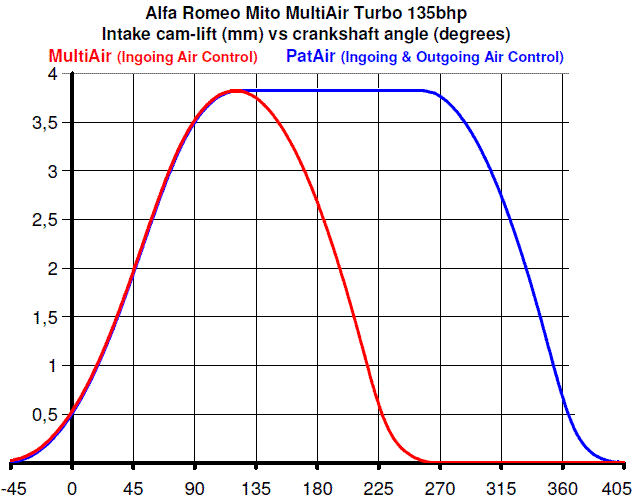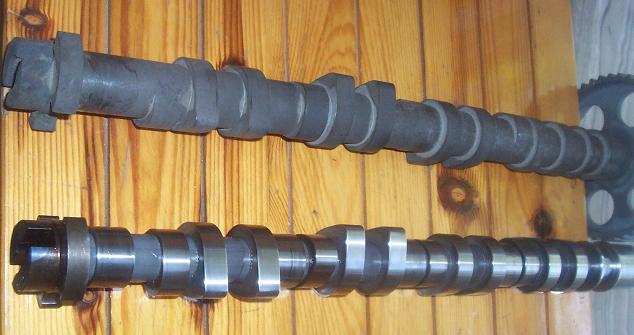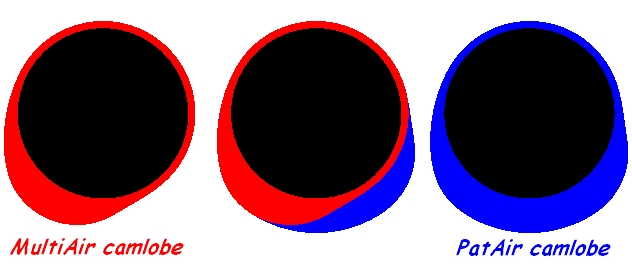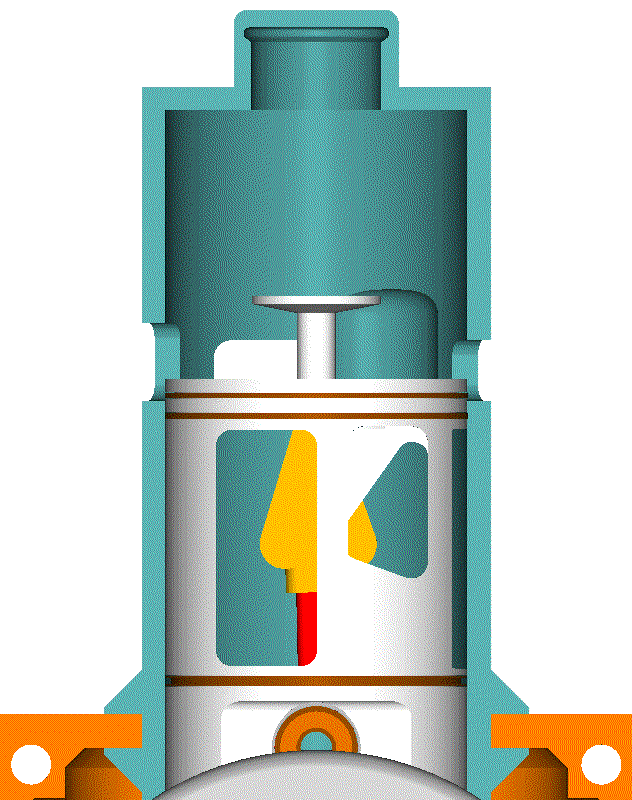Hello Pinger
You write:
“The point I was making was adoption by VW of the Miller/Atkinson cycle via the early as opposed to late inlet valve closing the latter being the more conventional of the two - rather than a critique on VVT mechanisms.”
The “Budack” cycle of VW is a simplified, one step MultiAir / Twin Air:

(i.e. from the infinite continuously variable modes of the "old" MultiAir of FIAT, "the" VW can operate with their "Budack" VVA at only two modes, a normal and an EIVC (early intake valve closing)).
The VW Budack "cycle" needs a throttle valve to control the load at partial / light loads (pumping loss), while the MultiAir needs not throttle valve: the intake valves is the only throttle valve of the MultiAir.
Take the case of the partial load of the MultiAir (central slide):

The intake valves close early (say 40-50 degrees after the TDC).
Then, the trapped in the cylinder fresh and cool air-fuel mixture expands (and cools down as it expands) until the BDC.
Its volume increases several times.
The crankshaft provides mechanical energy in order to expand the air-fuel mixture.
If adiabatic, this expansion would cause a significant temperature drop.
But the fresh air-fuel mixture is heated by the surrounding hot cylinder walls.
During the following compression stroke, the already heated air-fuel mixture resists and the crankshaft has to provide more energy for its compression (i.e. the crankshaft pays energy for the expansion of the air-fuel mixture, and then (because the air fuel mixture is heated by the walls) only a part of this energy is recovered as mechanical energy on the crankshaft).
The more partial the load, the higher the pumping loss.
Take now the PatAir running on its unlimited true Atkinson – Miller cycle (LIVC):

At partial load / low-medium revs,
the intake valves remain wide open during the intake stroke and during an initial big part of the compression stroke.
The intake valves finally close some 40 degrees before the TDC.
Most of the air-fuel mixture entered during the intake stroke, returns back into the intake manifold during the compression stroke almost without spending energy (with the intake valves wide open at low – medium revs, the gas flows so easily that the quantity of energy required is too small).
At the TDC the air-fuel mixture in the MultiAir (and in the Budack) is more (because it has to cover the increased pumping losses) and is substantially hotter than the compressed mixture in the PatAir.
The temperatures in the following combustion are lower in the PatAir (which means less thermal losses (and NOx emissions), which means more energy on the crankshaft during the following expansion).
As compaired to the MultiAir / TwinAir of FIAT / Alfa Romeo / Chrysler (and to the VW Budack VVA), the PatAir:


which mechanically is nothing more than a MultiAir having different intake cam lobe profiles on its camshafts,
not only consumes less mechanical energy during the intake and the compression cycles, but it also provides more mechanical energy during the expansion cycle (due to the lower thermal losses).
They above described differences may seem small / insignificant, however they dramatically change the way an internal combustion operates, its BTE, its BSFC, its emissions etc.
Thanks
Manolis Pattakos







